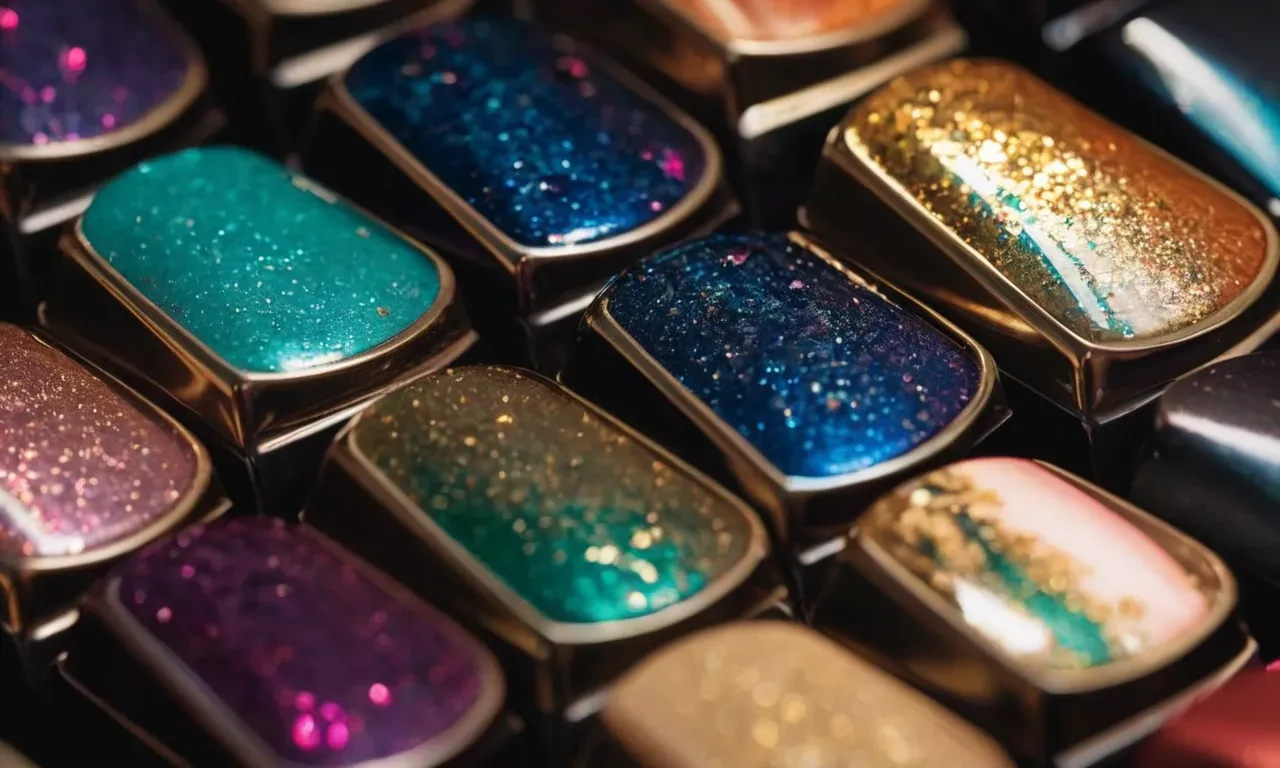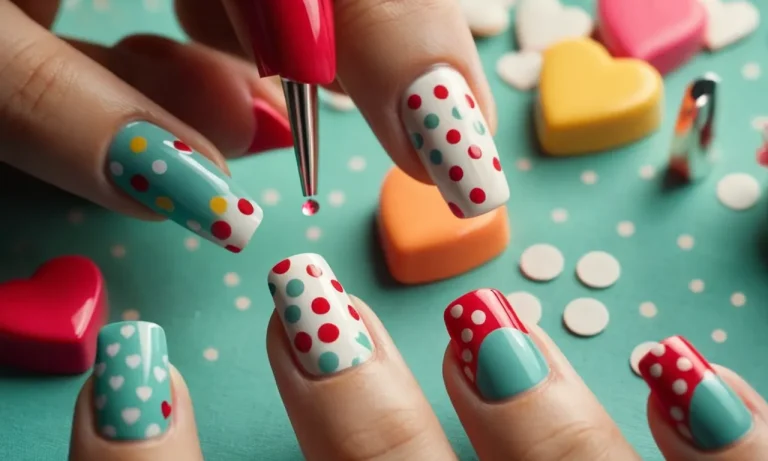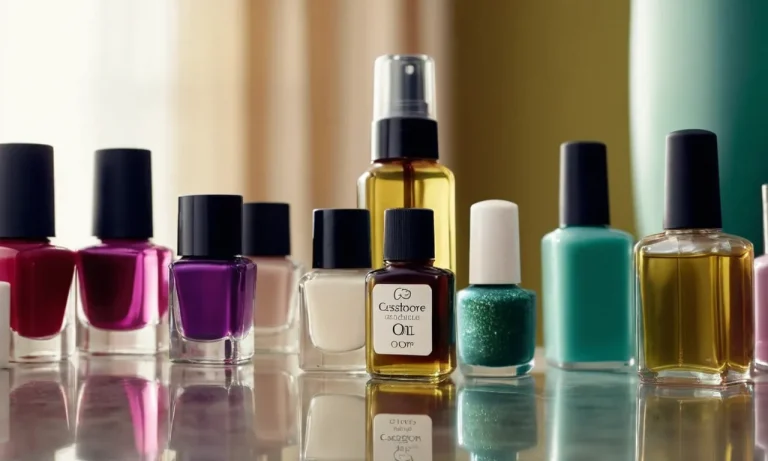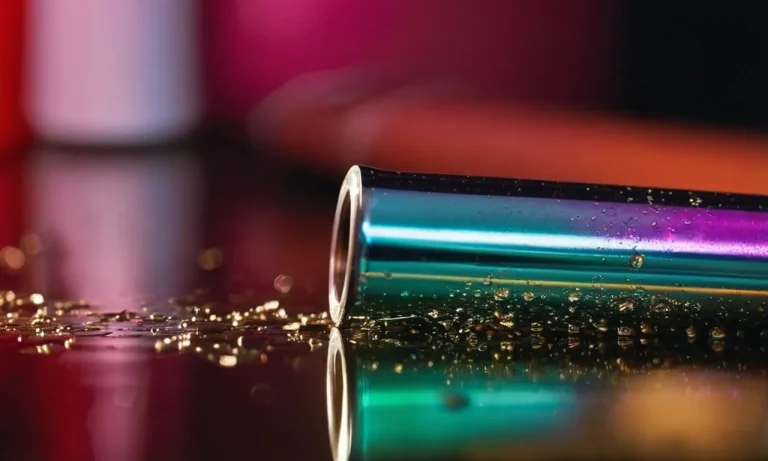What Happens If You Use Expired Nail Polish?
Using old nail polish that’s past its expiration date? Don’t fret – we’ve got you covered. In this comprehensive guide, we’ll walk you through everything you need to know about using expired nail polish.
If you’re short on time, here’s the quick answer: Using expired nail polish isn’t dangerous but may cause the polish to be thicker, dry slower, or get clumpy. The shine and color payoff will also likely fade compared to fresh nail polish.
Read on as we dive into signs your nail polish has expired, safety concerns, ways to revive old nail polish, how to properly dispose of it, and tips for making your manicures last with or without expired polish.
How Can You Tell If Nail Polish Has Expired?
There are a few key signs that indicate your nail polish may have expired and is no longer usable:
Changed consistency
Over time, nail polish can start to become thicker and more gloopy. Shaking the bottle vigorously may help temporarily, but if the formula seems overly thick or separated, it’s probably past its prime.
Clumping
Expired polish often clumps up when applied to nails. You may see clumps and bumps rather than the smooth, even application of fresh polish. The clumping occurs because the ingredients have started to break down over time.
Dull or faded color
Nail polish contains color pigments that can start to degrade and fade over time after opening. If the color seems significantly duller or less vibrant than when you first bought it, the pigments have likely expired.
Slow drying time
Most nail polishes fully dry within 5-10 minutes. But if your polish is taking much longer to dry or still feels tacky after 15-20 minutes, its drying agents are probably no longer working properly. Slow drying is a sure sign it’s time to let go.
According to nail care experts, the average shelf life of nail polish is 1-2 years when unopened. However, nail polish only lasts about 6-12 months after being opened before it starts to expire. Darker opaque colors may last a bit longer, while sheer and light colors expire more quickly.
So inspect your polishes carefully before use. Certain changes like thickness, clumping, and slow drying indicate the chemicals have degraded and using expired polish can damage nails. When in doubt, it’s best to replace old polishes with fresh ones for the best look and nail health.
Is It Safe To Use Expired Nail Polish?
Low health risk
Using expired nail polish poses a relatively low health risk. The ingredients in nail polish, like solvents, pigments, and film formers, don’t suddenly become toxic when they expire (1). However, some preservatives added to nail polish can lose effectiveness over time, raising contamination risks.
Overall, using old nail polish likely won’t make you sick, but it may cause some skin irritation.
May cause skin irritation
Expired nail polish can cause mild skin irritation, redness, burning, stinging, or itching around the nails (2). This is likely due to preservatives breaking down over time. Using very old nail polish with separated ingredients can also clog the nail plate, causing swelling, irritation, and possible infection.
To avoid this, test expired polish on a small skin area first and stop use if irritation occurs.
Higher risk for contamination
The biggest risk with using expired nail polish is bacterial or fungal contamination (3). Most nail polishes contain parabens, formaldehyde, or other preservatives that prevent growth of dangerous microbes.
However, over time preservatives lose effectiveness and contamination can occur, especially if bottles were opened. Using contaminated nail polish could potentially cause nail infections. Though unlikely with unopened bottles, it’s smart to discard nail polish 2-3 years after opening.
So is using expired nail polish safe? Generally, yes, but discarded after a few years as contamination risks increase. Always store nail polish properly, discard if smell or texture changes, and stop use if skin irritation occurs.
With reasonable precautions, that DIY manicure with leftover colors can be safe for another special occasion!
References:
- https://www.ncbi.nlm.nih.gov/pmc/articles/PMC5370648/
- https://www.healthline.com/health/beauty-skin-care/expired-nail-polish
- https://hellogiggles.com/beauty/what-happens-expired-nail-polish/
How To Revive Old Nail Polish
Add nail polish thinner
One of the best ways to revive thick, gloppy nail polish is to add a bit of nail polish thinner into the bottle. Nail polish thinner contains solvents that help break down the polymers in nail polish that have become stiff over time.
Just add 1-2 drops of thinner, put the brush back in, and roll the bottle between your hands to mix it up. The polish should become noticeably more fluid. Keep adding thinner 1 drop at a time until you achieve the desired consistency.
Be careful not to over-thin your polish though, or it may end up too runny and sheer.
Try a drying drop
Ironically, adding a drying drop product can also help revive thick old nail polish. These drops contain ingredients like acetone that help break down the nail polish polymers. They are made to help speed up drying time when using nail polish, but can also thin out clumpy old polish.
Add 1 drop and roll the bottle between your hands to incorporate it. Check the consistency and continue adding 1 drop at a time as needed until it reaches the right fluidity.
Use cuticle oil for consistency
An easy DIY trick for thinning gloopy nail polish is to add a bit of cuticle oil into the bottle. The oils help soften the nail polish and get it moving freely again. Dip a toothpick into your favorite cuticle oil and swirl it around the inside of the nail polish bottle to transfer a small amount in.
Put the brush back in and roll the bottle between your palms to mix. The consistency should improve with just a tiny bit of oil. Be conservative with how much you add – you don’t want to make the polish too thin.
Shake well before use
Shaking your nail polish before use can help smooth out any clumps and globs, especially if you don’t have nail polish thinner or other additives on hand. The agitation helps re-blend the nail polish ingredients that have separated over time.
Make sure to secure the cap tightly, then vigorously shake the bottle up and down for 30-60 seconds. This should redistribute the pigments and polymers for a more uniform, flowing consistency. Just be sure to let the bubbles settle before applying for the smoothest results.
Get in the habit of shaking before each use for revived nail polish every time.
Using old nail polish doesn’t have to mean dealing with thick, lumpy application. With some simple tricks, you can bring that stale polish back to life. A few drops of thinner or oils, or a good shake, can make the difference between gloppy and glam.
Don’t let the expired date on the bottom scare you – resuscitate that nail polish for a flawless DIY manicure.
Proper Disposal of Expired Nail Polish
When nail polish expires and you want to throw it away, it’s important to dispose of it properly. Nail polish contains chemicals like toluene, formaldehyde, and dibutyl phthalate that can be harmful to the environment.
Just tossing old nail polish in the trash or pouring it down the drain can pollute landfills and waterways. Here are some tips for safely disposing of expired nail polish:
Solidify with kitty litter or sawdust
One easy method is to solidify liquid nail polish with an absorbent material like kitty litter or sawdust. Simply mix a few tablespoons of the absorbent material into the nail polish bottle until it turns into a solid clump that can be thrown away.
The litter or sawdust will prevent the liquid chemicals from leaking out.
Bring to hazardous waste collection
Many communities have household hazardous waste collection days a few times a year when you can properly dispose of old household chemicals. Check with your local waste management department to find out when they are holding a collection event in your area.
Just make sure the nail polish is sealed tightly so it doesn’t spill during transport.
Contact local waste management
If there’s no hazardous waste event coming up soon, call your garbage collection company or local waste management office. Ask them about any permanent household hazardous waste drop-off locations available in your area.
Some towns have dedicated facilities where residents can safely dispose of chemicals year-round. Dropping off old nail polish at these sites ensures it gets disposed of properly.
No matter which disposal method you choose, make sure to store the expired nail polish safely until you’re ready to get rid of it. Keeping it in a cool, dry place with the cap screwed on tight will prevent spills or leaks of the toxic ingredients.
And never dump old nail polish down the drain or in the trash – we all need to do our part to keep our environment clean!
Tips For Longer-Lasting Manicures
Use a base coat
Applying a base coat before painting your nails is crucial for protecting them and preventing stains. Base coats act as a primer by filling in ridges and evening out the nail surface so polish glides on smoothly.
Popular base coat brands like Orly Bonder and Essie Here to Stay help nail polish adhere better and last longer without peeling or chipping.
Cap the tips
Painting just a bit of nail polish over the tips of your nails will help seal in moisture and prevent cracking and peeling. Try using a thick top coat for this instead of regular colored polish. The extra layer on the tips acts like a mini barrier against damage.
Apply thin layers
Applying too-thick coats of colored polish often leads to bubbling and peeling. Multiple thinner layers always look more smooth and flawless. Let each thin layer dry for a few minutes before adding the next.
The general rule is to wait until the polish looks shiny, not dull, before adding another layer.
Use quick-dry top coat
High-shine top coats like Essie Gel Couture and Sally Hansen Insta-Dri dry quickly to help seal and protect nail color underneath. Their fast-drying formulas prevent smudges and fingerprints on freshly painted nails.
Give polish time to cure
It takes at least 24 hours for most regular nail polish and even gel polish to fully dry and cure to maximum hardness. Try not to soak nails in water or pick at polish during that initial day to avoid weak spots and chips.
The longer you leave color on without removing it, the stronger and more scratch-resistant it becomes over time.
Moisturize hands and cuticles
Dry, brittle nails and cuticles lead to lots of cracking and peeling that ruins a nice manicure. Use a daily hand cream like Neutrogena Norwegian Formula or Gold Bond Ultimate Healing to condition nails and make them more flexible and less prone to breakage when polished.
Push back and trim cuticles gently with cuticle remover liquid and nippers to minimize hangnails.
Avoid water exposure
Frequent dish-washing, swimming, showering, etc. can cause nail polish to lift at the edges and tip, leading to chips. Wearing rubber gloves during wet chores helps shield nails. When possible, avoid immersing hands in water the first day or two after a fresh mani.
Water-resistant top coats also add extra protection against moisture damage.
Conclusion
So there you have it! While using expired nail polish isn’t recommended for the best results, it’s generally safe to use in a pinch. Be on the lookout for changes in consistency, clumping, or fading color.
With some revival tips and proper manicure techniques, you can still rock the nail polish you love even after its expiration date has passed.
Always remember to dispose of old nail polish properly and take any irritations as a sign to toss the expired bottle. With a keen eye and a few extra steps, you can safely enjoy long-lasting, chip-free manicures – without having to splurge on brand new polish every time.







